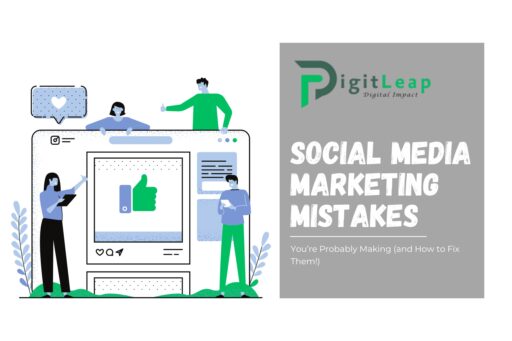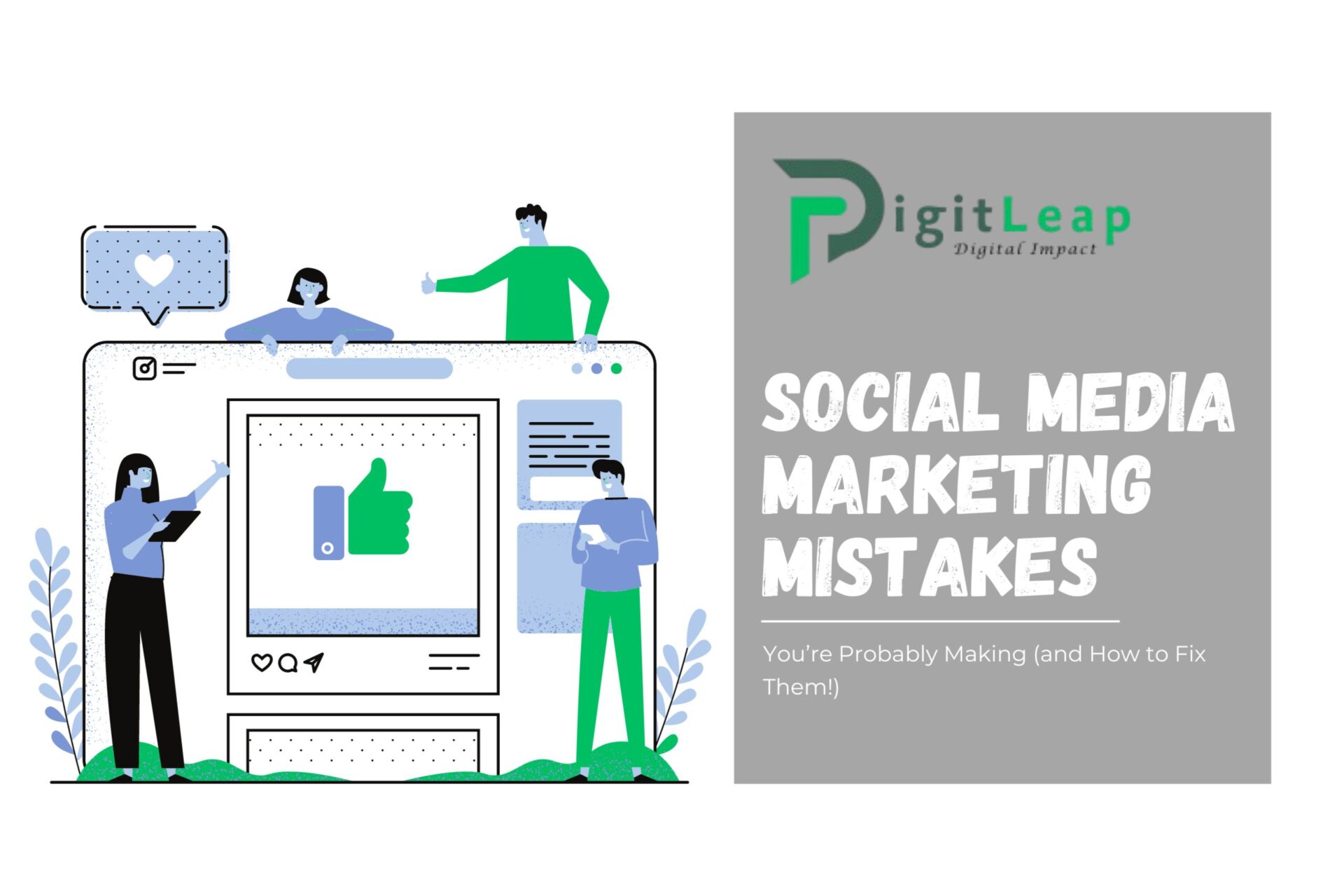Stop Sabotaging Your Social Media: 10 Common Marketing Mistakes and How to Fix Them!
Social media is a powerful tool, but even the best marketers can fall into common traps that hinder success. If you’ve ever wondered why your posts aren’t generating the engagement you hoped for, you might be making some of these mistakes. Let’s explore 10 common social media marketing errors and simple fixes to help you elevate your strategy and truly connect with your audience.

1. Ignoring Your Audience’s Interests
The Mistake:
Focusing too much on your brand’s message rather than what your audience cares about.
The Fix:
Take time to research your audience’s preferences and pain points. Use social listening tools and direct feedback to craft content that speaks directly to their interests and challenges. Tailor your messaging to provide genuine value, whether it’s educational, entertaining, or inspiring.
2. Inconsistent Posting
The Mistake:
Posting sporadically can cause your audience to lose interest or forget about you entirely.
The Fix:
Develop a content calendar that outlines a consistent posting schedule. This keeps your brand in front of your audience regularly and helps build a steady flow of engagement. Consistency is key—even if you’re posting a few quality updates per week, it’s better than long gaps with no activity.
3. Over-Promotion
The Mistake:
Focusing solely on selling your product or service can turn off your followers.
The Fix:
Strike a balance by mixing promotional content with value-driven posts. Share tips, industry insights, behind-the-scenes looks, and user-generated content to create a well-rounded profile that nurtures trust and engagement.
4. Neglecting Engagement
The Mistake:
Posting content and then disappearing, leaving comments and messages unanswered.
The Fix:
Engage with your audience actively. Respond to comments, ask questions, and participate in conversations. Engagement builds community and turns passive followers into loyal fans.
5. Poor Visual Quality
The Mistake:
Using low-quality images or inconsistent branding can damage your professional image.
The Fix:
Invest in high-quality visuals that align with your brand identity. Consistency in color schemes, fonts, and overall aesthetics helps create a recognizable and trustworthy presence.
6. Not Analyzing Data
The Mistake:
Failing to review analytics and understand what’s working and what isn’t.
The Fix:
Regularly check your social media metrics—such as engagement rates, reach, and conversions. Use this data to adjust your strategy and refine your content for better results. Testing different approaches and learning from the numbers is crucial for ongoing improvement.
7. Ignoring Trends
The Mistake:
Sticking to old strategies while the social landscape evolves.
The Fix:
Stay updated on the latest trends and features on social platforms. Whether it’s new interactive tools or emerging content formats like Stories or Reels, being open to change can give you a competitive edge.
8. Not Using Paid Promotion Wisely
The Mistake:
Spending too much or too little on ads without a clear strategy.
The Fix:
Define clear objectives for your paid campaigns and monitor your return on investment (ROI). Experiment with different targeting options and budget allocations until you find the sweet spot that drives real results.
9. Forgetting Mobile Optimization
The Mistake:
Overlooking the mobile experience, even though most users access social media on their smartphones.
The Fix:
Ensure that all your visuals and content are optimized for mobile viewing. A seamless mobile experience can boost engagement and help your posts stand out.
10. Lack of Clear Branding
The Mistake:
Not having a cohesive brand voice or visual style can confuse your audience.
The Fix:
Develop and stick to clear brand guidelines. Consistency in messaging and design builds recognition and trust, making it easier for your audience to connect with your brand.
Final Thoughts
Avoiding these common pitfalls can transform your social media presence. By focusing on what matters to your audience, maintaining consistency, engaging authentically, and leveraging data, you can build a robust, trustworthy brand that stands out in the crowded digital space. Remember, social media is all about genuine connection—get creative, be consistent, and always listen to your audience.





